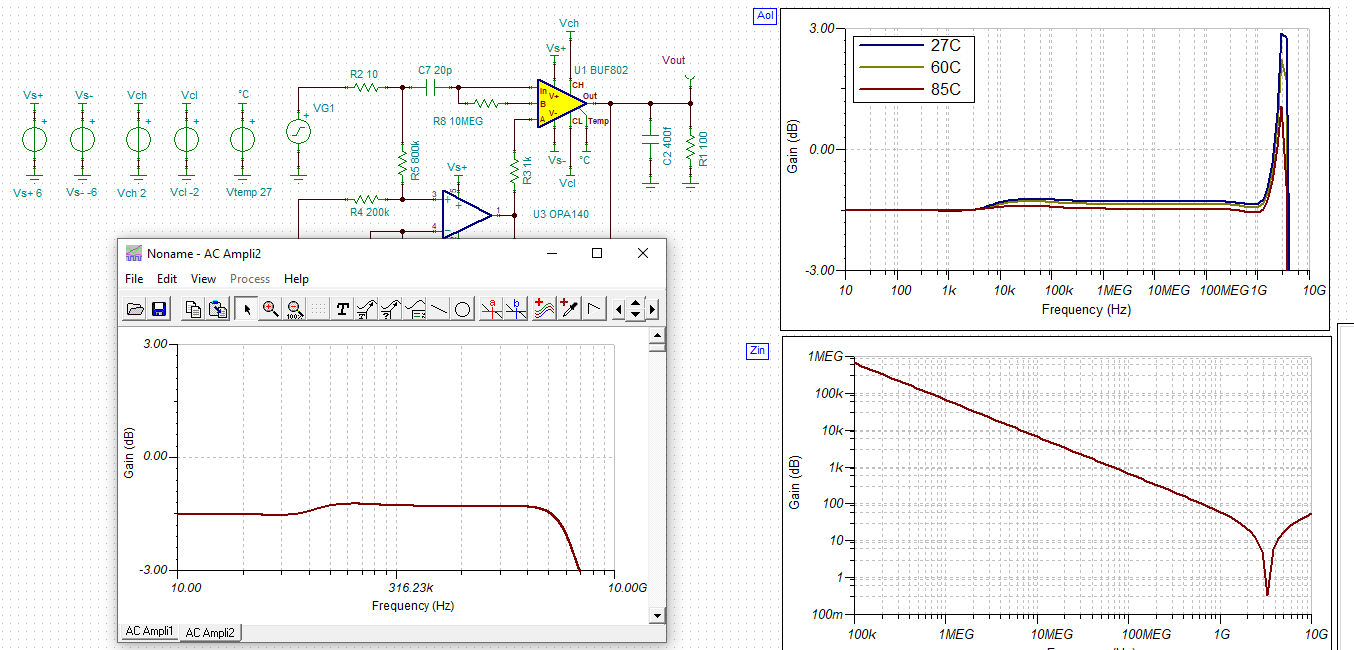Other Parts Discussed in Thread: TINA-TI,
After loading the "BUF802 TINA-TI Reference Model" from the website into TINA 9, and trying to run the analysis (DC or AC) of the circuit, I get an error related to the Model

Is there an update to the Spice Model of the BUF802 circuit?




